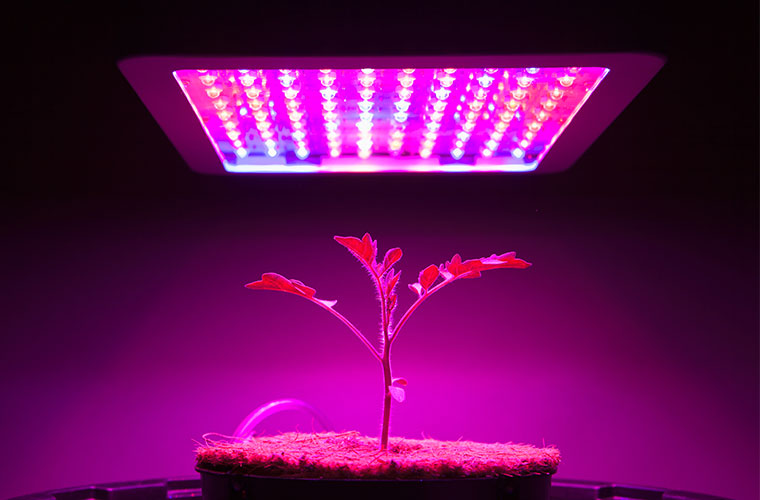By John Curran
LEDs are the foundational element of a variety of lighting applications today, in part because of the ability to customize the spectrum of light. Yet with so many in the industry looking forward to research confirming the effect of certain wavelengths improving mood and health in humans, perhaps they’re looking too far into the future. When it comes to agriculture, the benefits and proof are here now.
Issues in Agriculture
Growing plants requires managing a number of factors, from lighting to soil pH to moisture and more. As a result, the industry combines frequent experimentation in techniques with a desire for reliable equipment. As Staci Young, Illumitex Director of Marketing notes, “High-pressure sodium lighting has been used since the 1960s, so there is an inherit hesitation to switching from something that has been working for 50 years.”
Using LEDs in agricultural applications can also confuse growers because of the wide variety of products available, and especially the different wavelengths possible. “I’m not a big fan of white-light LED growers even though they’re cheaper,” WiSilica Director of Product Marketing Ian Cumming argues. There are newer options on the market that include stronger deep red and “violet punch” wavelengths that are conducive to growth for a wide variety of plants.
Customization and Well-Known LED Benefits
As always, efficiency is king when it comes to LEDs. As Cumming goes on to explain, lighting technology is about a year or two out from providing the same yield—or amount of crop produced over the same time period—as HPS lights. But in a resource-intensive sector like agriculture, the amount of money saved based on lumens per watt makes a huge difference. Now growers are saying, “We’re not getting the same yields, but we’re saving enough money.”
Young adds that manufacturers that focus on agricultural LEDs need to also provide ongoing support. “Our success is two-fold – product benefits and solution-based services,” she says. “We cannot just rely on a spec sheet to convince a grower that our lights are the best for them. We have to go beyond that and act as a consultant for their operation.”
Product development is iterative for most industries, but perhaps most so when it comes to grow applications. The need to rapidly update based on buyer feedback is critical for success and may mean that distributors need to update their sales processes to account for this shifting relationship.
The Hazy Elephant in the Room
At the intersection of tech and agriculture is marijuana. Entrepreneurs coming from Silicon Valley or East Coast business schools are flocking to California, Colorado, Washington and other states to experiment in the new and occasionally legally murky world of cannabis growing. For some distributors, that can raise concerns not just of whether or not they’re aiding criminal activities, but also the moral issues of the same.
In the case of the former, the drug remains illegal at the federal level and is subject to the decisions of the Attorney General. As the presidential administrations change, so, too have priorities at the Department of Justice. While one administration might allow the DEA to focus on other illicit drug issues, another may be more likely to increase enforcement. Still, suppliers have not been the subjects of investigation under either administration and there is no reason to suggest that they would be in the future.
What Distributors Need to Know
On a strictly business level, as always, saving customers money is king. Randy Young of BriteSwitch says that rebates are still a few years out from offering the same scale of benefits that they do in industrial and office applications.
Agricultural projects sometimes qualify under custom programs that “typically require thorough project review and engineering calculations to determine an incentive amount,” he says. U.S. Department of Agriculture and especially Rural Energy for America Program (REAP) grants may cover up to 25 percent of these agricultural installations.
In terms of client-facing needs, distributors should understand that there is no single solution that fits a majority of needs and as a result, the value of customer relationships and ongoing support is going to be critical. In no way is that a judgment of any current practices. Rather, as Cumming argues, it requires a level of service that may turn extremely profitable as high-value markets like cannabis grow and reliance on older HPS light sources no longer make sense.
Tagged with agriculture, LED, lightED